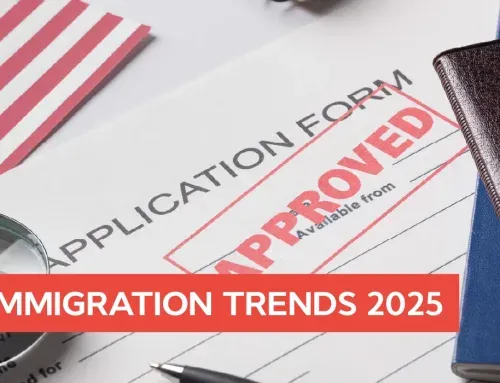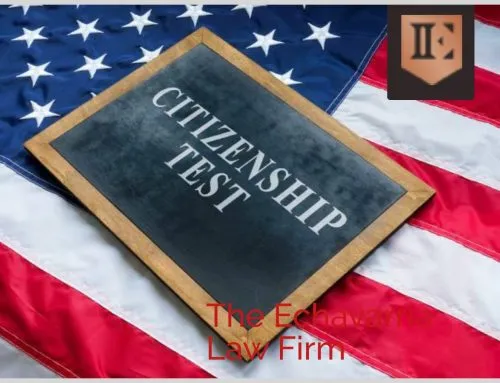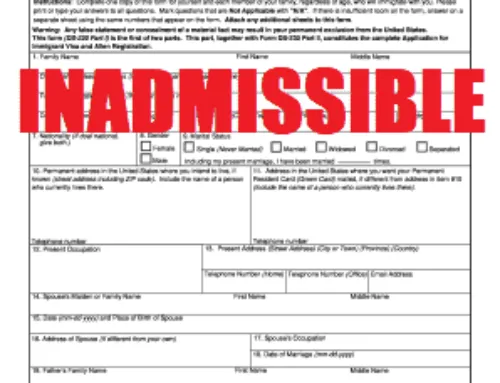The path to becoming a U.S. citizen is a profound journey, one taken by millions who seek to fully participate in American society. It’s a process filled with detailed forms, specific requirements, and important milestones. For a permanent resident, the final step in this journey is naturalization—the legal process of acquiring a new nationality. While rewarding, the path can seem complex, involving meticulous paperwork and a comprehensive test of your knowledge. This guide is designed to be your A-Z resource, demystifying each stage of the naturalization process, from confirming your eligibility to preparing for the crucial N-400 application and citizenship interview. We will walk you through every step, providing the clarity and confidence you need to successfully navigate your journey to becoming a U.S. citizen.
Your Journey to U.S. Citizenship: An Overview
What is Naturalization?
Naturalization is the process through which a lawful permanent resident of the United States, after meeting specific requirements established by Congress in the Immigration and Nationality Act (INA), can become a U.S. citizen. This process is administered by U.S. Citizenship and Immigration Services (USCIS). It is not an automatic right but a privilege granted to those who demonstrate their commitment to the principles of the U.S. Constitution. The culmination of this journey is taking the Oath of Allegiance, a formal declaration of loyalty to the United States.
Why Become a U.S. Citizen?
While holding a Green Card grants a permanent resident many rights, U.S. citizenship unlocks a new level of participation and security. The benefits are significant and life-changing for many individuals and their families. a local san antonio green card lawyer can help you become a leagal citizen Key advantages include:
- The Right to Vote: Participate in federal, state, and local elections to have a voice in your government.
- Family-Based Immigration: Sponsor a wider range of relatives to immigrate to the United States.
- U.S. Passport: Travel abroad with the full protection and assistance of the U.S. government.
- Federal Employment: Qualify for federal jobs that are often restricted to U.S. citizens.
- Holding Public Office: Run for elected office at various levels of government.
- Security from Deportation: Citizenship provides the ultimate protection against removal from the country.
A Roadmap to this Guide
This guide provides a comprehensive, step-by-step walkthrough of the entire naturalization process. We will begin by helping you determine if you meet the strict eligibility criteria. From there, we will conduct a deep dive into the most critical document of this journey: Form N-400, the Application for Naturalization. We will then navigate the procedural steps that follow submission, master preparation for the citizenship interview and tests, explore special exemptions, and finally, celebrate the last step—the Oath of Allegiance ceremony.
Eligibility for Naturalization: Do You Qualify?
Before investing time and resources into the application, you must first confirm you meet all the necessary requirements. USCIS is meticulous in its evaluation, and failure to meet even one criterion can result in a denial.
General Requirements for Civilian Applicants
Most applicants must satisfy a core set of requirements to be eligible for naturalization. These include:
- Age: Be at least 18 years old at the time of filing.
- Permanent Resident Status: Be a lawful permanent resident (Green Card holder) for a specified period. Generally, this is five years, but it is reduced to three years if you have been married to and living with a U.S. citizen spouse for that duration.
- Continuous Residence: Maintain residence within the United States for the required period (five or three years) before filing. Trips abroad lasting six months or more can disrupt this requirement.
- Physical Presence: Be physically present in the United States for at least half of the required residence period (30 months out of five years, or 18 months out of three years).
- Good Moral Character: Demonstrate that you have been a person of good moral character for the statutory period. USCIS reviews your criminal history, tax compliance, and truthfulness.
- Attachment to the Constitution: Show an allegiance to the principles of the U.S. Constitution.
- English Language Skills: Demonstrate an ability to read, write, and speak basic English.
- U.S. Civics Knowledge: Pass a test on U.S. history and government.
Special Eligibility Considerations
Certain individuals may qualify under special provisions. The most common is the three-year rule for spouses of U.S. citizens. Additionally, there are streamlined processes for individuals who have served in the U.S. armed forces. These provisions often reduce the required time as a permanent resident and may have more lenient physical presence requirements, recognizing the unique contributions and sacrifices of these applicants and their families.
The Naturalization Eligibility Tool
To simplify the initial assessment, USCIS offers a free online Naturalization Eligibility Tool. This interactive questionnaire guides you through a series of questions to help you determine if you meet the general requirements before you begin preparing your forms and documents. It is a highly recommended first step in your naturalization process.
The N-400 Application Deep Dive: Section-by-Section Mastery
The Form N-400, Application for Naturalization, is the cornerstone of your citizenship application. This comprehensive form gathers all the information USCIS needs to determine your eligibility. Accuracy and honesty are paramount.
Before You Begin: Gathering Your Documents
Preparation is key to a smooth application process. Before you start filling out the N-400, gather all necessary documents. While the exact list varies by case, most applications require:
- A photocopy of both sides of your Permanent Resident Card (Green Card).
- The application fee payment (check, money order, or credit card information via Form G-1450).
- If applicable, a copy of your marriage certificate.
- If you are applying based on marriage to a U.S. citizen, evidence that your spouse has been a citizen for at least three years.
- If you have ever been arrested or convicted of a crime, certified court and police records for all incidents.
Navigating the N-400 Form: A Detailed Walkthrough
The N-400 is a lengthy form divided into several parts. Key sections require meticulous attention:
- Part 1-4: Your personal information, including name, date of birth, and any requests for accommodations for disabilities or impairments.
- Part 5-8: Information about your residence, employment history, and any time spent outside the United States. Be precise with dates, as USCIS will use this to verify your continuous residence and physical presence.
- Part 9-11: Details about your marital history and your children. This information helps establish family ties and potential derivative citizenship for minor children.
- Part 12: The “Additional Information” section is one of the most critical. It contains a series of “yes/no” questions related to your background, affiliations, and moral character. Answer every question truthfully. An incorrect or dishonest answer here can lead to a denial.
Filing Your N-400: Fees, Fee Waivers, and Submission
You can file Form N-400 online or by mail. Filing online through a USCIS account is often faster and allows you to receive immediate confirmation, track your case status, and communicate directly with USCIS. The total cost includes a filing fee for the application and a separate fee for biometric services. Applicants with limited income may be eligible for a fee waiver (Form I-912) or a reduced fee, which must be submitted with supporting financial documents.
The Application Process: From Submission to Interview
After you submit your N-400 application, a series of procedural steps begins. Patience is essential, as this stage can take several months.
Receiving Your Notices
Shortly after filing, you will receive a receipt notice from USCIS (Form I-797C, Notice of Action). This document confirms that your application has been received and provides a receipt number that you can use to track your case status online.
The Biometrics Appointment
Next, you will receive a notice for a biometrics appointment. At this short appointment, USCIS will collect your fingerprints, photograph, and signature. This information is used to conduct a thorough FBI background check. You must bring your appointment notice and a valid photo ID, such as your Green Card or driver’s license.
Interview Scheduling
Once your background check is complete and your application has been pre-processed, USCIS will schedule your naturalization interview. You will receive an interview notice in the mail detailing the date, time, and location of your appointment. This is the most significant milestone before a final decision is made on your case.
Understanding Processing Times
The time it takes USCIS to process naturalization applications varies significantly based on the field office’s caseload and other factors. You can get an estimated processing time for your specific office using the “Check Case Processing Times” tool on the USCIS website. Checking this tool periodically can help you manage your expectations throughout the waiting period.
Mastering the Citizenship Interview & Tests
The naturalization interview is your opportunity to confirm your eligibility in person and demonstrate your knowledge of English and U.S. civics.
Preparing for Your Interview
Your interview will be conducted by a USCIS officer. They will place you under oath and then review your N-400 application with you, asking questions to verify the information you provided. It is essential to review your application thoroughly before the interview. Bring the original versions of all the documents you submitted with your application, as well as any updated documents, such as a new passport or marriage certificate.
Acing the Civics Test: U.S. History and Government
A core component of the interview is the civics test. The officer will ask you up to 10 questions from a list of 100 official questions. You must answer at least six questions correctly to pass. The questions cover important topics in U.S. history and principles of American government. USCIS provides all study materials, including the full list of 100 questions and answers, free of charge on their website.
Interpreter Services
The naturalization process has a statutory English language requirement. Therefore, you must take the interview and tests in English. Interpreters are not permitted unless you qualify for a medical disability exception or an age-based exemption.
Special Considerations & Exemptions
USCIS recognizes that not all applicants fit the standard profile and has established several exemptions and special considerations.
Medical Disability Exception
Applicants with a physical or developmental disability or a mental impairment that prevents them from learning English or civics may be eligible for an exception. To apply for this exception, a licensed medical professional must complete Form N-648, Medical Certification for Disability Exceptions, detailing the applicant’s condition and explaining how it impacts their ability to meet the requirement.
Naturalization Through Military Service
Members and veterans of the U.S. armed forces may be eligible for an expedited naturalization process. Provisions under sections 328 and 329 of the INA allow those who have served honorably to apply for citizenship, often with waived residency and physical presence requirements. This recognizes the unique service and commitment of military personnel to the United States.
Dual Citizenship: What You Need to Know
The United States does not require a naturalizing citizen to renounce their previous citizenship. This means you may be able to hold citizenship in both the U.S. and your country of origin. However, it is your responsibility to check the laws of your other country, as some nations do not permit dual citizenship and may automatically revoke your citizenship upon your naturalization in the U.S.
The Oath of Allegiance: Becoming a U.S. Citizen
The final step in the naturalization journey is the oath ceremony, a momentous event where you formally become a U.S. citizen.
The Ceremony
If USCIS approves your N-400 application after the interview, you will be scheduled for an Oath of Allegiance ceremony. This can happen the same day as your interview or at a later date. During the ceremony, you will return your Permanent Resident Card, take the Oath of Allegiance, and receive your Certificate of Naturalization.
What Happens After the Oath?
Your Certificate of Naturalization is official proof of your U.S. citizenship. With it, you can take several important steps:
- Apply for a U.S. passport.
- Register to vote.
- Update your Social Security record to reflect your new status.
Navigating Challenges and Avoiding Pitfalls
To ensure a successful journey, avoid these common pitfalls:
- Inaccuracies: Double-check every piece of information on your N-400 for accuracy.
- Failing to Disclose: Be completely honest about your entire history, especially any past arrests, even if charges were dismissed.
- Missing Appointments: Do not miss your biometrics or interview appointments without notifying USCIS in advance and requesting a reschedule for a valid reason.
- Travel Issues: Carefully track your time outside the U.S. to ensure you meet the continuous residence and physical presence requirements.
Conclusion
The path to U.S. citizenship through naturalization is a demanding but incredibly rewarding process. It requires careful preparation, honesty, and a commitment to understanding the values and history of the United States. By methodically confirming your eligibility, meticulously preparing your Form N-400, gathering all necessary documents, and diligently studying for your civics and English tests, you can navigate this journey with confidence.
Your next steps are clear:
- Use the USCIS Naturalization Eligibility Tool to verify that you meet the core requirements.
- Begin gathering the essential documents you will need for your application packet.
- Create a free account on the USCIS website and familiarize yourself with the online version of Form N-400.
This guide has provided the A-Z roadmap; now, it is time to take the first step toward the rights, responsibilities, and pride that come with being a U.S. citizen.


